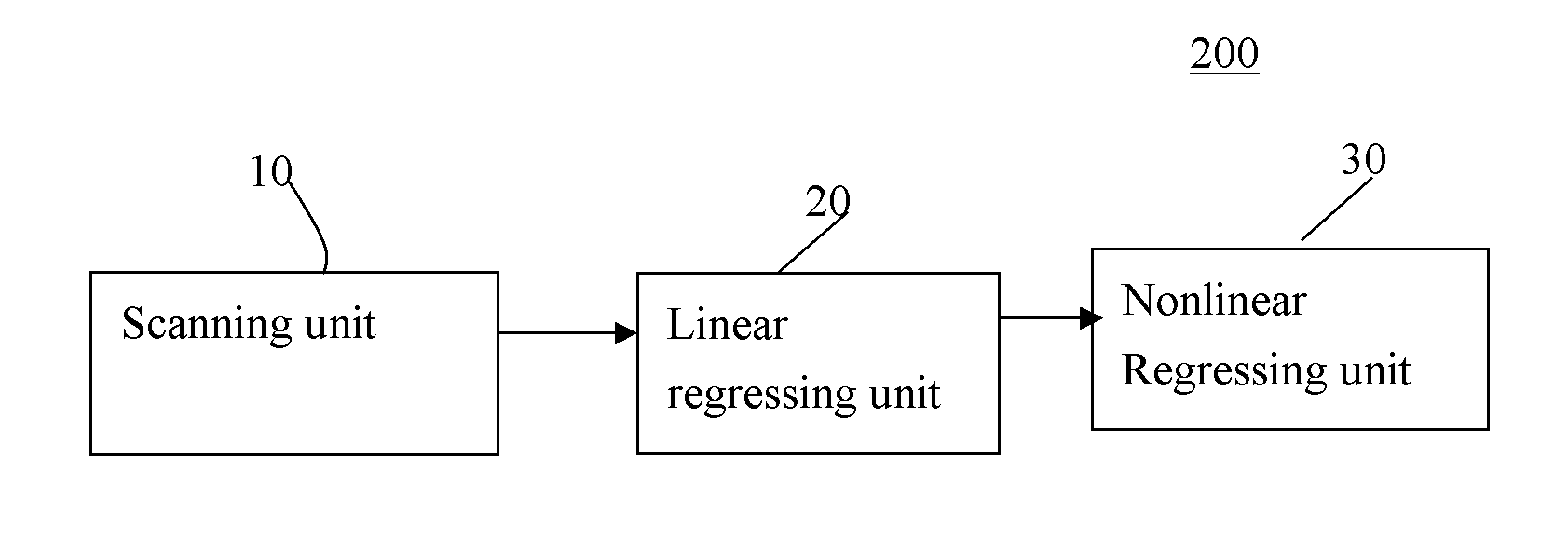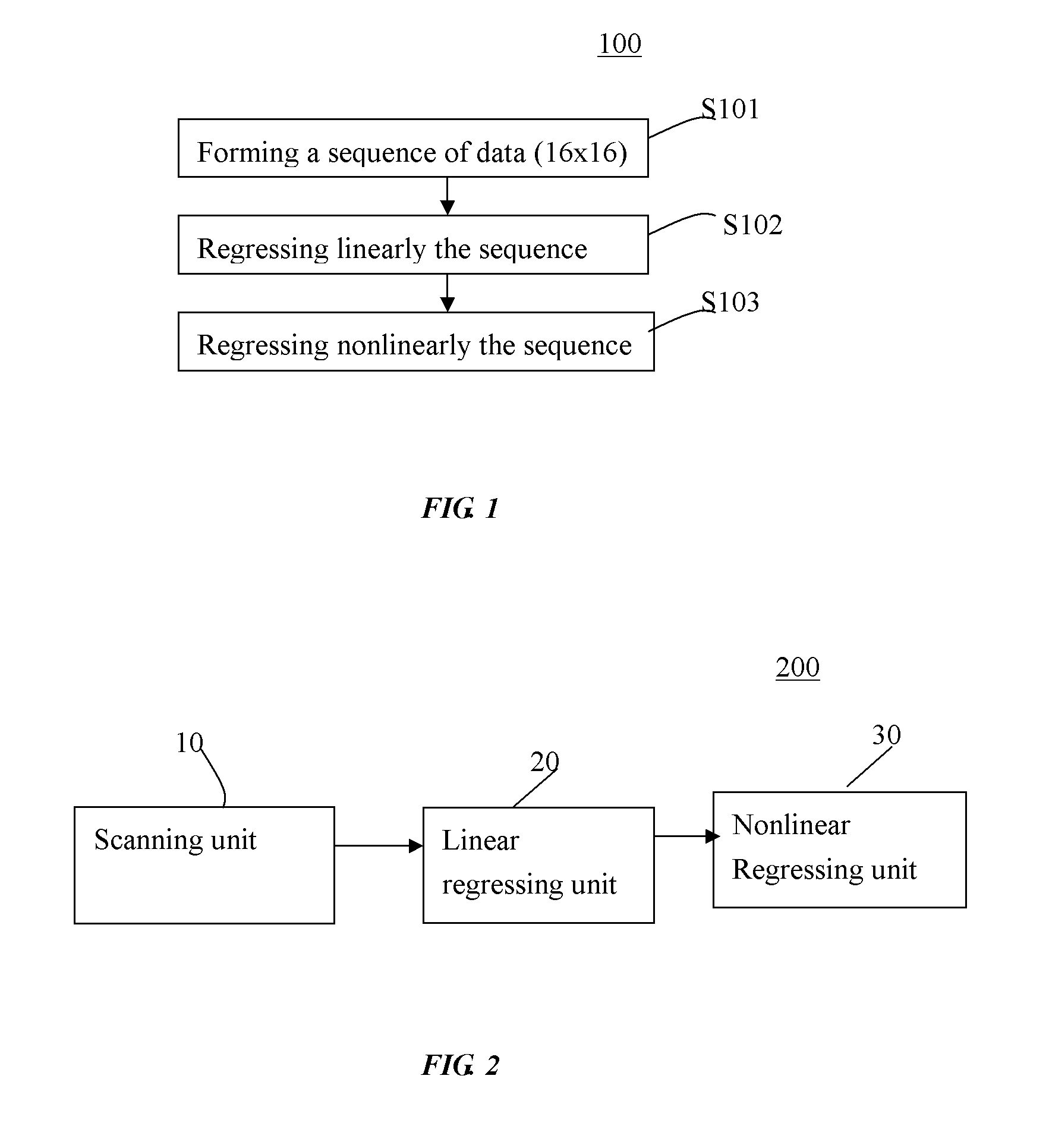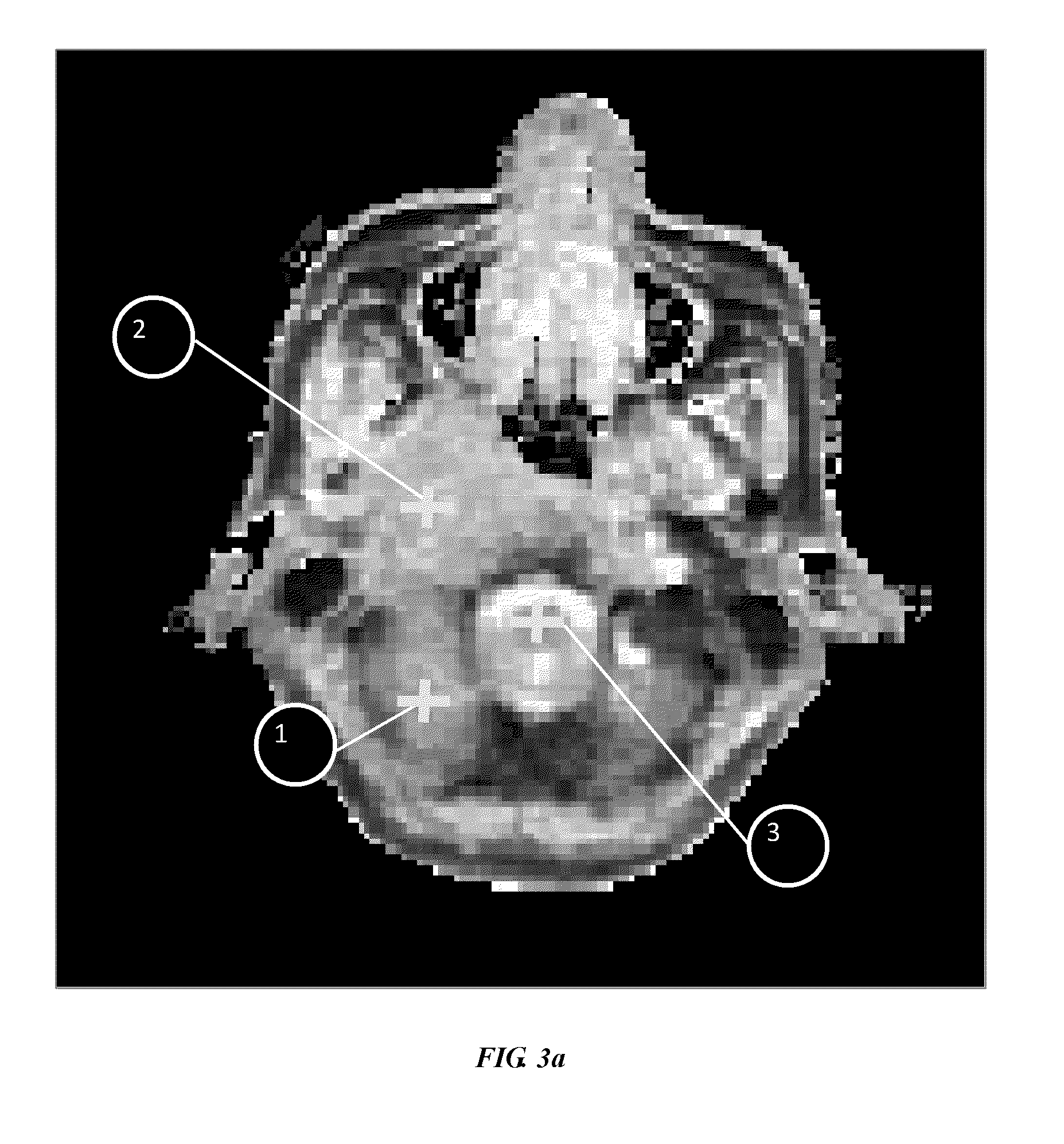Methods and systems for estimating longitudinal relaxation times in MRI
a technology of longitudinal relaxation and magnetic resonance, applied in the field of methods and systems for estimating longitudinal relaxation times in magnetic resonance imaging, can solve problems such as difficult acquisition and particularly sensitive systematic errors in the gradient echo sequen
- Summary
- Abstract
- Description
- Claims
- Application Information
AI Technical Summary
Benefits of technology
Problems solved by technology
Method used
Image
Examples
Embodiment Construction
nlinear optimization problem converge to a good estimation robustly and efficiently, the solution of the linear regression was utilized as the initial estimate of the nonlinear regression.
BRIEF DESCRIPTION OF THE DRAWINGS
[0018]FIG. 1 illustrates a process for estimating a T1 in MRI according to one embodiment of the application.
[0019]FIG. 2 illustrates a system for estimating a T1 in MRI according to one embodiment of the application.
[0020]FIG. 3 illustrates curve fitting results on a slice of Subject 1 estimated by different methods.
[0021]FIG. 4 illustrates an RMSE of the four T1 estimation methods (Fram's method, the Fitter Tool in Jim, COPE and COPE-GPU) on the six subjects as listed in Table 1.
DETAILED DESCRIPTION OF THE PREFERRED EMBODIMENT
[0022]Hereinafter, a process 100 (in the context of the application, it is also referred as “COPE”) for estimating longitudinal relaxation time T1 in MRI according to one embodiment of the present application will be discussed in reference to...
PUM
 Login to View More
Login to View More Abstract
Description
Claims
Application Information
 Login to View More
Login to View More - R&D
- Intellectual Property
- Life Sciences
- Materials
- Tech Scout
- Unparalleled Data Quality
- Higher Quality Content
- 60% Fewer Hallucinations
Browse by: Latest US Patents, China's latest patents, Technical Efficacy Thesaurus, Application Domain, Technology Topic, Popular Technical Reports.
© 2025 PatSnap. All rights reserved.Legal|Privacy policy|Modern Slavery Act Transparency Statement|Sitemap|About US| Contact US: help@patsnap.com



